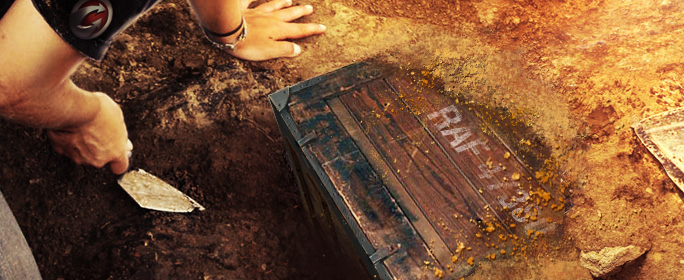-
![LANG-CODE-KEY]() LANG_NAME_KEY
LANG_NAME_KEY

For many years, in the UK at least, “Aviation Archaeology” was regarded as a search for artefacts from usually iconic Aircraft carried out by enthusiasts rather than the Professional Archaeological community, whom it must be said largely neglected or ignored the subject. Indeed, many archaeologists would not allow it to be called “archaeology” at all because its practitioners did not use archaeological methods, did not record the process of excavation, did not publish reports and some even mistreated the remains of aircrew found in the course of aircraft digs. It was concern about the extent of these activities which led to the passing of the Protection of Military Remains Act in the UK in 1986, requiring anyone who wishes to excavate a military aircraft of any nation in the UK to hold a licence from the Ministry of Defence.
However, there is now an increasing recognition among archaeologists that we need a more sophisticated view of the archaeology of aviation which sees an individual aircraft both as an archaeological site in its own right, possibly containing delicate evidence such as graffiti and marking left by ground crews and evidence of battle damage and repairs, as well representing an expression of the culture which created and used it. In this context an aircraft can be seen as the focus of a complex web of economic investment, support, supply and function, now filtered by human and cultural memory.
For example, as Jonathan Glancey has described so well in his book “Spitfire”, as well as being a superbly designed fighting aircraft the Spitfire is also an icon of Art Deco industrial design and for the British a symbol of national pride and identity.
The reasoning behind this new approach is best described in this quote from the 1996 “Guidelines for Evaluating and Documenting Historic Aviation Properties”, published by the US Department of the Interior, National Parks Service and National Register of Historic Places [Anne Milbrooke et al 1998].
"Yet aviation is more than airplanes. It is a technology which broadly defined, includes aircraft and wrecks of aircraft, production and testing facilities, air terminals, and other components that support civil, military, and commercial flying. The airplane gradually became the vehicle of transportation and military revolutions, and aviation has permeated twentieth-century life. Aviation's significance is reflected in many aspects of American history, architecture, archaeology, engineering, and culture. Under the National Register's areas of significance, aviation has played an important role in the history of agriculture, architecture, archaeology, art, commerce, communications, education, engineering, entertainment/ recreation, industry, invention, landscape architecture, military, science, social history, and transportation. Milbrooke 1998 p7"
I have used this concept on a site related to Spitfires once before. In the Summer of 2011 I directed the excavation of the crash site of Spitfire X4273 shot down over London during the Battle of Britain, killing the pilot, Pilot Officer Robin MacGregor Waterston. The excavation, which was licenced by the UK Ministry of Defence, as all excavations of Military Aircraft in the UK have to be, showed that the crash site had been cleared in 1940 and so we did not find any artefacts related to the aircraft. However, while that was disappointing to the excavation sponsor an aviation museum, the excavation was a success in forensic archaeological terms.
Because we excavated the site archaeologically rather than simply going in search of artefacts, we were able to examine the circumstances of the crash in the same way as an air crash would be investigated today by the Air Accident Investigation Branch or the NTSB. This forensic examination of the crash site showed that the crash of PO Waterston’s aircraft was somewhat different to what had previously been believed; for example it had not impacted deeply into the ground and this new information made sense of some of the contemporary witness reports and recorded memories of the incident built up over many years by the researchers associated with the project.
This project to investigate the legend of buried Spitfires at Mingaladon Airfield is a chance to use that iconic aircraft, the Spitfire, as the lens which enables us to see a microcosm of that forgotten war in Burma and to help us recover the historical and material traces of the people whose lives that war impacted. Of course this includes members of the Royal Air Force, the Japanese Air Force and American Volunteer Group - the famous Flying Tigers. But we must not forget it also includes the people of Rangoon and Mingaladon and the refugees who, documents tell us, lit their camp fires alongside the Pegu Road at Mingaladon Airfield in the chaotic early months of 1942 as the Army and Air Force of one Empire, the British, pulled out and that of another, the Empire of Japan, moved in and who we know by 1945, were even short of items as simple as pots and pans to prepare their food.